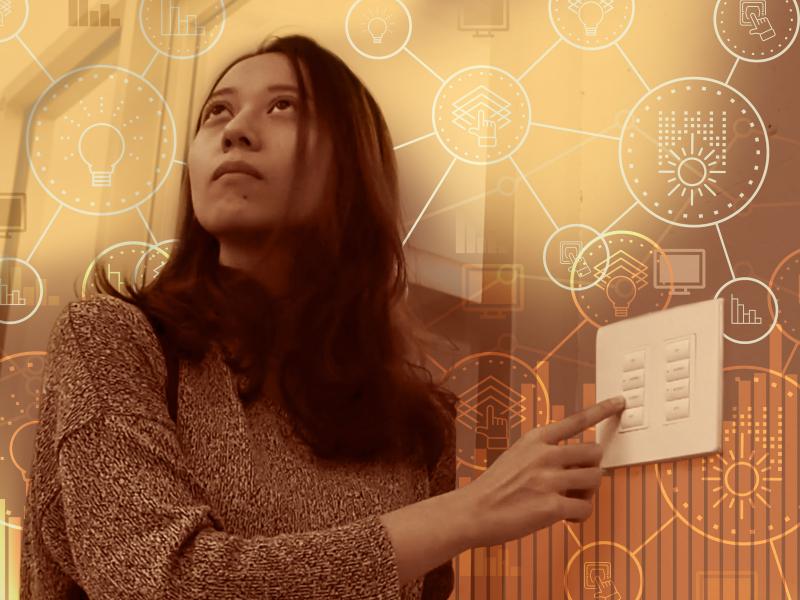
Advanced Lighting
Advanced Lighting
A bright future for
energy-efficient lighting
A bright future for
energy-efficient lighting
PNNL maintains a nationally accredited lighting test laboratory and staff expertise to effectively evaluate advanced lighting systems and their applications. Shown here is an Accelerated Long-term Test Apparatus (ALTA) where the light sources are installed and the small sphere moves along the track.
Andrea Starr | Pacific Northwest National Laboratory
Solid-state lighting (SSL) technology has advanced rapidly over the past decade. By 2016, SSL saved an estimated $4.7 billion in energy costs through the replacement of legacy light sources with LEDs in buildings and outdoor applications. LED lighting is well on its way to ubiquity across the built environment, proving more energy efficient than any other light source.
However, the real excitement stems from the remaining headroom for improving luminous efficacy and advanced control of spectrum, intensity, and light distribution. These advances will deliver intelligent lighting systems many times more efficient and effective than the best current technology. The future of lighting is connected and controllable, with the ability to place the right amount and spectrum of light where and when it is needed. These improvements will optimize vision, productivity, ambiance, security, and also provide physiological benefits.
DOE’s Building Technologies Office, which manages the Solid-State Lighting Program, focuses on research to cut U.S. lighting-related energy use by 75 percent by 2035, while improving lighting quality, functionality, and service.
Informing industry standards
PNNL supports DOE’s mission through research that informs new lighting metrics and methods of measurement adopted by industry standards organizations. These entities include the Institute of Electrical and Electronics Engineers (IEEE), American National Standards Institute, and the Illuminating Engineering Society (IES).
For example, PNNL led the development of a new way to measure the color rendering capabilities of light sources. This work addressed deficiencies in the existing industry standard, which the lighting research community wrestled with for decades. This new set of metrics in turn enables new lines of research and model-based analysis to relate human visual preference, spectrum, and energy efficiency of light sources.
PNNL has also played an important role in researching and characterizing flicker in LED lighting. This phenomenon was long suspected of causing short- and long-term health effects—including impaired vision, headaches, and even seizures in susceptible populations. PNNL tested early LED products for flicker, providing data that were incorporated into an IEEE standard. This was followed by PNNL testing and accuracy evaluation of several generations of flicker meters. Now widely available, these meters enable SSL technology developers to accurately measure and address flicker in their products and systems.
Specialized lighting facilities
PNNL is also leading new research on connected lighting systems. By incorporating distributed intelligence, network interfaces, and sensors, these systems become data-collecting platforms that enable a wide range of valuable new capabilities, as well as delivering greater energy efficiency. The Lighting Science and Technology Laboratory in Portland supports this research, with a large high-bay space for testing and evaluating emerging connected lighting systems for energy reporting accuracy, interoperability, system energy performance, and cybersecurity vulnerability.
PNNL is helping the nation spark a lighting revolution through increased energy efficiency and improved functionality and quality. The future of lighting—75 percent less energy use in the next two decades—is indeed bright.

